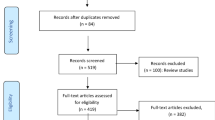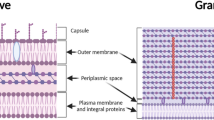Abstract
The European Network for diagnosis and treatment of antibiotic-resistant bacterial infections—EURESTOP COST Action CA21145 focuses on tackling the burden of antimicrobial resistance (AMR) and has gathered many members working on photodynamic approaches. This European consortium is presented here in the One Health context, to highlight the potential of antimicrobial photodynamic therapy (aPDT) in the fight against AMR.
Similar content being viewed by others
Avoid common mistakes on your manuscript.
The COVID-19 pandemic has seriously highlighted the lack of preparedness of Public Health systems to the emergence and outbreak of novel microbial threats. Particularly, in the case of bacteria, the risk is notably increased by new possible species, which arise due to evolutionary processes and environmental changes, as well as by the emergence of drug-resistant strains, i.e., bacteria that are not (or no more) susceptible to available drugs. In the last few decades, there has been an increase in the outbreak of drug-resistance bacteria, with several clinically relevant microorganisms rapidly evolving toward multi-drug (MDR) and even pan-drug-resistant phenotypes [1, 2]. Although the outbreak of most of these pathogens is recorded mostly within hospital settings, their potentiality to spread outside hospitals represents a critical risk for the global population. Indeed, it has been estimated that if the phenomenon is not controlled, more than 10 million people worldwide will die for infection by MDR bacteria by 2050 [3].
The World Health Organization (WHO) has identified antibiotic resistance as one of the top three health threats of the twenty-first century, and has recently published a priority list of drug-resistant or MDR bacteria for which new antibiotics are urgently needed, including Gram-positive and Gram-negative species [4]. Moreover, the USA Centers for Disease Control and Prevention (CDC) has classified the most dangerous drug-resistant bacteria into three major classes based on the potential health risks associated with their spread. These lists include Acinetobacter, Klebsiella, Pseudomonas, Escherichia, and Staphylococcus spp. that, among others, have developed resistance to most antibacterial drugs used in the clinical practice, representing, therefore, an urgent health threat. In some cases, the ESKAPE acronym is used to refer to life-threatening pathogens including Enterococcus faecium, Staphylococcus aureus, Klebsiella pneumonia, Acinetobacter baumannii, Pseudomonas aeruginosa, and Enterobacter spp., which are responsible for most of the MDR nosocomial of hospital infections [5].
Research and development of novel antibacterial drugs have peaked in the 60s–70s with the discovery of several new chemical classes of antibiotics. However, in the last two decades, the discovery of new antimicrobial drugs has notably declined; most of the new antibiotics belong to well-known chemical classes, bearing generally slight chemical modifications to the main scaffolds that are poorly effective in escaping drug resistance [6]. The urgency is so great that programs such as the WHO’s AWaRe have been implemented to address the challenges posed by antimicrobial resistance and by the scarcity of antimicrobial alternatives [7]. These innovative approaches are essential not only to combat the most aggressive pathogens, but also to deal with potentially emerging bacteria. As a results, there is a strong and urgent need of novel, and possibly innovative, antibiotics endowed with novel chemical structures and/or novel mechanisms of action, which might be strongly effective against the most offending pathogens as highlighted by the WHO and CDC, as well as against potentially emerging bacteria.
In this context, the COST Action EURESTOP (CA21145—European Network for diagnosis and treatment of antibiotic-resistant bacterial infections, Fig. 1) granted by the COST Association (European Cooperation in Science and Technology) and coordinated by Prof. Mattia Mori from the University of Siena (Italy) aims to address the urgent issues related to antimicrobial resistance through multiple tasks [8]. First of all, having identified one of the main limitations of current antimicrobial research in Europe in the dispersion of efforts and lack of coordination, EURESTOP aims to bring together scientists with different skills and expertise, coming from both the academic and industrial sectors. This initiative is designed to be multidisciplinary and concerted, aligning with the One Health approach. At the time of this topical issue, EURESTOP has just entered the second project year, and it collects already more than 400 scientists from European countries and above. Disciplines currently involved include chemistry, physics, bioinformatics, genetics, biology, immunology, veterinary, and medicine. Second, given the multiple factors that might be responsible for the resistance of a bacterial specie to drug treatment, EURESTOP scientifically aims to understand the genetic and molecular bases of bacterial drug resistance, which will stimulate the development of innovative diagnostic tools as well as lead/pre-clinical candidates including antibody-based therapies, and clinical-ready repurposed drugs toward the personalized treatment of drug-resistant bacterial infections. Finally, several EURESTOP members are classified as young researchers and investigators (< 40 age), and several actions will be taken toward their career development and scientific training with the ambitious goal to nurture the next generation of lead European scientists. All these initiatives, which will continue at least till the end of October 2026, will notably enhance networking among European scientists and increase the competitiveness of European research in the field of antimicrobial resistance. Joining EURESTOP to foster discussion and awareness on the critical issue of antimicrobial resistance, as well as to participate in research and networking activities, is welcome and still possible through the Action’s website (www.eurestop.eu) or through the COST Association website.
The logo of the EURESTOP COST Action [8]
Antimicrobial photodynamic therapy (aPDT) is an especially interesting method to kill bacteria and other microbes [9]. It can be used for different applications: not only for the treatment of infections, but also for surface disinfections, treatment of plant diseases and wastewaters remediation. Its principle is based on the photosensitizer-mediated and light-induced generation of reactive oxygen species (ROS). These ROS have an aggressively oxidative action, inducing the death of nearby cells. Importantly, they do not cause side effects due to their short lifetime in biological media [10]. The oxidation damages affect all subcellular components without discrimination, much unlike the mode of action of antibiotics, and this is the reason why the development of resistance is highly unlikely, even though some tolerance has been observed in suboptimal conditions of utilizations. In addition, the photodynamic effect actively kills microbes and, therefore, rapidly reduces the load of pathogens; whereas, several classes of antibiotics including tetracyclines, macrolides, and sulfonamides typically induce a bacteriostatic effect resulting in dependence of the effectiveness of the latter on the host's immune response. aPDT emerges as a powerful, accessible, and cost-effective strategy in the battle against microbial resistance requiring minimal technical resources and making it a practical solution in various settings. Although in the past the photodynamic therapy was associated with heavy, complex, and expensive illuminated systems, nowadays the affordability of its light sources contributes to its practicality and broadens its application spectrum. This aspect is crucial in demystifying the idea that aPDT is a technique requiring expensive and complex technical resources.
As the scientific community increasingly recognizes the potential of aPDT, it is becoming clear that creating a critical mass of interdisciplinary collaboration is urgent. This collaboration should ideally include chemists, physicists, medical professionals, microbiologists, and investors, all working together to integrate aPDT into the pipeline of therapeutic and preventive approaches against infections. The importance of collaborative efforts cannot be overstated, particularly in initiatives like the COST Action, which play a pivotal role in overcoming antimicrobial resistance. These initiatives demonstrate the effectiveness of joining forces, accelerating the integration of aPDT into standard treatment protocols. Moreover, by replicating such initiatives, we can propel aPDT into the mainstream of therapeutic strategies, making it a frontline therapy in the global fight against infections and antimicrobial resistance. Such concerted efforts will ensure that aPDT gains its deserved recognition and becomes an integral part of our arsenal against the growing threat of antimicrobial resistance. This is not surprising then that several members of the EURESTOP consortium are working on photodynamic approaches against resistant microbes, including three of the co-authors of this viewpoint, scientist committed with the photobiology field in several aspects [11].
Among the first and still used photosensitizers for the antimicrobial application is methylene blue. However, drawbacks remain, such as staining of tissue and limited penetration of the activating light, which restricts its use against deep-seated bacterial infections. Current efforts in antimicrobial PDT within a One Health framework are focused on several directions. First, there is ongoing research in the development of better photosensitizers, both molecular and nanoscale, with enhanced efficiency not only in terms of overall photokilling but also in dosage, strain specificity, and harmless excretion. Additionally, research is underway to create more versatile light sources, incorporating innovative approaches to enhance the effectiveness of aPDT.
Data availability
Not applicable.
References
Goossens, H., Ferech, M., Stichele, R. V., Elseviers, M., & Grp, E. P. (2005). Outpatient antibiotic use in Europe and association with resistance: A cross-national database study. The Lancet, 365(9459), 579–587. https://doi.org/10.1016/S0140-6736(05)17907-0
Marshall, B. M., & Levy, S. B. (2011). Food animals and antimicrobials: impacts on human health. Clinical Microbiology Reviews., 24(4), 718. https://doi.org/10.1128/cmr.00002-11
O’Neill, J. (2014). Antimicrobial resistance: tackling a crisis for the health and wealth of nations. Review on antimicrobial resistance, https://amr-review.org/sites/default/files/AMR%20Review%20Paper%20-%20Tackling%20a%20crisis%20for%20the%20health%20and%20wealth%20of%20nations_1.pdf
World Health Organization. (2014). Antimicrobial resistance: Global report on surveillance. Downloaded from https://www.who.int/publications/i/item/9789240027336
De Oliveira, D. M. P., Forde, B. M., Kidd, T. J., Harris, P. N. A., Schembri, M. A., Beatson, S. A., Paterson, D. L., & Walker, M. J. (2020). Antimicrobial resistance in ESKAPE pathogens. Clinical Microbiology Reviews, 33(3), e00181-e219. https://doi.org/10.1128/cmr.00181-19
Plackett, B. (2020). Why big pharma has abandoned antibiotics. Nature, 586, S50–S52. https://doi.org/10.1038/d41586-020-02884-3
The WHO AWaRe (Access, Watch, Reserve) antibiotic book – Infographics, Downloaded from https://iris.who.int/bitstream/handle/10665/365135/WHO-MHP-HPS-EML-2022.02-eng.pdf?sequence=1
www.eurestop.eu – EURESTOP logo designed Marko Jelovac and Tomislav Meštrović
Wainwright, M., Maisch, T., Nonell, S., Plaetzer, K., Almeida, A., Tegos, G. P., & Hamblin, M. R. (2017). Photoantimicrobials-are we afraid of the light? The Lancet Infectious Diseases, 17(2), e49–e55. https://doi.org/10.1016/S1473-3099(16)30268-7
Plaetzer, K., Krammer, B., Berlanda, J., Berr, F., & Kiesslich, T. (2009). Photophysics and photochemistry of photodynamic therapy: Fundamental aspects. Lasers in Medical Science, 24(2), 259–268.
Dr Amparo Faustino, past-president of the European Society of Photobiology, Dr Kristjan Plaetzer, editor-in-chief of Photochemical and Photobiological Sciences, and Dr Fabienne Dumoulin, officer of the European Society of Photobiology
Acknowledgements
This article/publication is based upon work from COST Action EURESTOP, CA21145, supported by COST (European Cooperation in Science and Technology)
Funding
Open access funding provided by Università degli Studi di Siena within the CRUI-CARE Agreement.
Author information
Authors and Affiliations
Corresponding author
Ethics declarations
Conflict of interest
MM is the chair of the EURESTOP COST Action. KP is the co-editor-in-chief of Photochem. Photobiol. Sci. MAFF, FD, and KP are the co-editors of the Topical issue “Antimicrobial PDT in a One Health World”.
Rights and permissions
Open Access This article is licensed under a Creative Commons Attribution 4.0 International License, which permits use, sharing, adaptation, distribution and reproduction in any medium or format, as long as you give appropriate credit to the original author(s) and the source, provide a link to the Creative Commons licence, and indicate if changes were made. The images or other third party material in this article are included in the article's Creative Commons licence, unless indicated otherwise in a credit line to the material. If material is not included in the article's Creative Commons licence and your intended use is not permitted by statutory regulation or exceeds the permitted use, you will need to obtain permission directly from the copyright holder. To view a copy of this licence, visit http://creativecommons.org/licenses/by/4.0/.
About this article
Cite this article
Mori, M., Dumoulin, F., Faustino, M.A.F. et al. Perspectives in the treatment of antibiotic-resistant bacterial infections with active photodynamic partners within the framework of the EURESTOP COST Action (CA21145). Photochem Photobiol Sci 23, 815–817 (2024). https://doi.org/10.1007/s43630-024-00555-0
Received:
Accepted:
Published:
Issue Date:
DOI: https://doi.org/10.1007/s43630-024-00555-0





